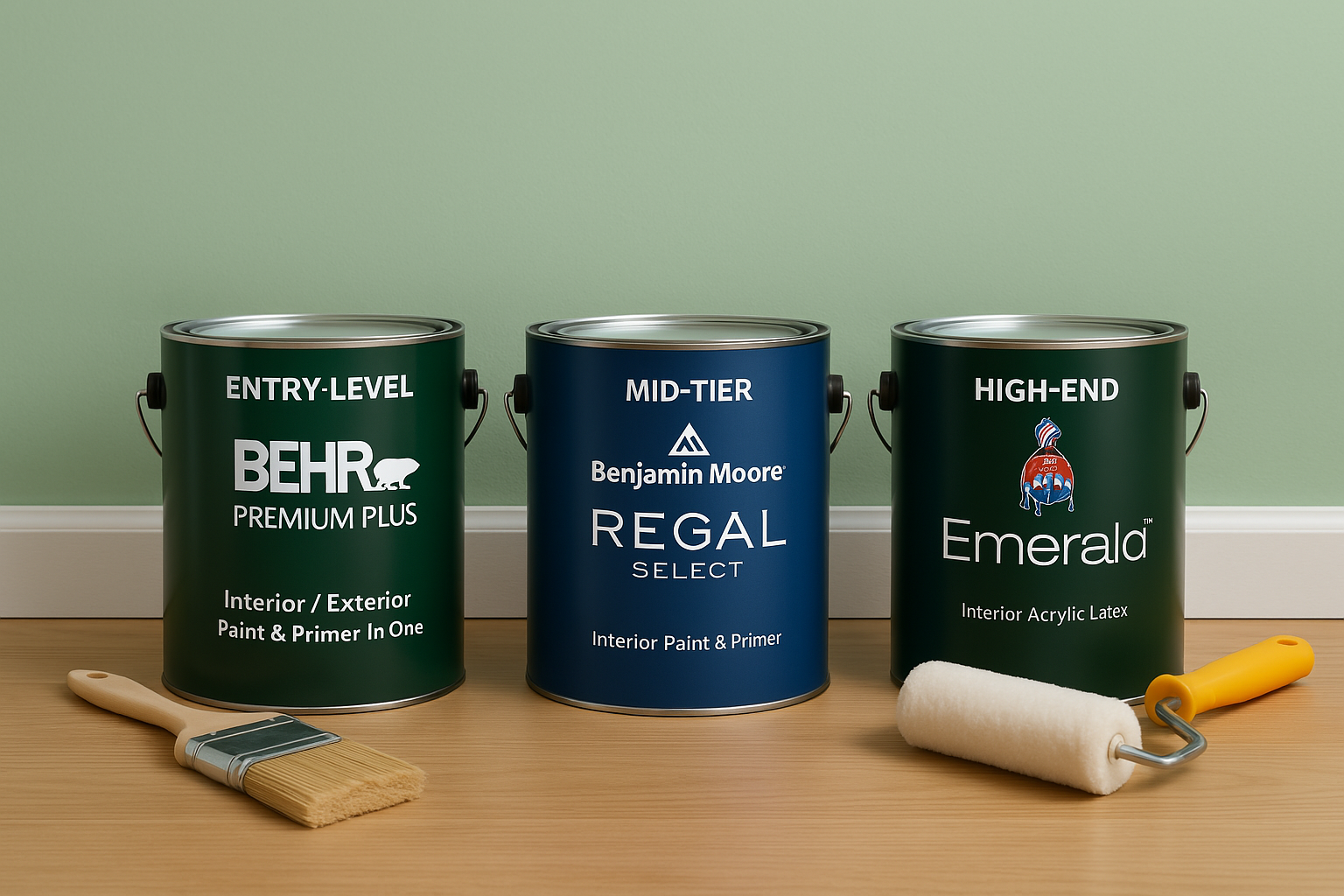
Choosing the Right Paint: What Really Makes a Paint "High Quality"?
Whether you're painting your own home or hiring a pro, it's natural to wonder: what makes one paint better than another? Why does one gallon cost $30 and another $80? And is there a real difference between DIY paints from big box stores and professional-grade paints used by contractors?
This post breaks down the key differences in paint quality, what "high solids" and "premium resins" actually mean, and how the most trusted brands stack up.
What Makes Paint "High Quality"?
There are a few core ingredients in any paint: pigment, resin (or binder), solvent (water in acrylics), and additives. But the quality and ratio of these ingredients make all the difference. Here are the big three to focus on:
1. Solids Content
Solids are what's left behind after the water evaporates. High-quality paints have more solids, which means:
Better coverage per coat
Thicker, more protective film
Longer-lasting results
Lower-quality paints are cheaper because they’re diluted. They might cover in 2–3 coats what a pro-grade paint can do in 1–2.
2. Resin Quality
Resins are what bind the paint to the surface and help it stay flexible over time. The better the resin, the more durable and fade-resistant the finish. Premium resins also resist cracking, chalking, and peeling over years of weather exposure.
3. Additives and Technology
Higher-end paints often include advanced mildewcides, UV inhibitors, and flow agents that:
Help paint self-level (fewer brush marks)
Improve weather resistance
Keep the color looking fresh
Pro-Grade vs. DIY Paints: What's the Real Difference?
DIY paint brands are made to be easy to work with, especially for someone who doesn’t paint every day. That means:
Thinner body
Longer open time (dries slower)
Less prone to drag or lap marks
But this ease of use often comes at the cost of performance. You’ll need more coats, and it won’t last as long.
Pro-grade paints, on the other hand, are designed for efficiency and durability. They have:
Higher solids
Faster drying time
Better adhesion and hide
They require a bit more experience to apply well but deliver longer-lasting, more professional results.
Comparing the Brands: Sherwin-Williams, Benjamin Moore & Behr
Let’s look at how the major brands stack up across performance tiers:
Entry-Level (DIY Grade)
Behr Premium Plus (Home Depot)
Benjamin Moore ben Exterior/Interior
These paints are budget-friendly, easy to use, and good for lighter-duty projects. Great for short-term refreshes but not ideal for harsh climates or long-term durability.
Mid-Tier (Pro Standard)
Sherwin-Williams SuperPaint
Behr Ultra
Benjamin Moore Regal Select
These are solid options for most homes. They offer good coverage, decent durability, and better fade resistance. They’re a great balance of cost and quality.
High-End (Top Performance)
Sherwin-Williams Duration or Emerald
Benjamin Moore Aura
Behr Marquee
These paints are built for long-term beauty and protection. They hold color extremely well, resist mildew and weather, and require fewer repaints over the years.
Final Thoughts: Choosing What’s Right for You
If you’re hiring a pro, you’re likely already getting higher-end materials built into the price. If you’re DIYing, it’s tempting to save money on cheaper paint—but you may end up spending more in time and extra coats.
Pro tip: A high-quality paint, even at $70–$90 a gallon, is often cheaper per job than two to three coats of a lower-quality one.
At Chromabrush Painting, we use professional-grade paints because they give our clients the most beautiful, long-lasting results. We don’t believe in cutting corners, and we’ll always help you choose the right paint for your home’s needs, climate, and style.
Need help choosing the perfect paint? Reach out — we love helping homeowners make smart, lasting choices.
 Chromabrush Painting by J&M
Chromabrush Painting by J&M
We’re based in Livonia and proudly serve Wayne, Oakland, and Washtenaw Counties—Livonia, Northville, Novi, Plymouth, Canton and beyond.